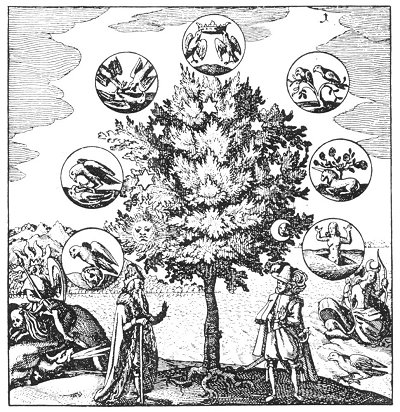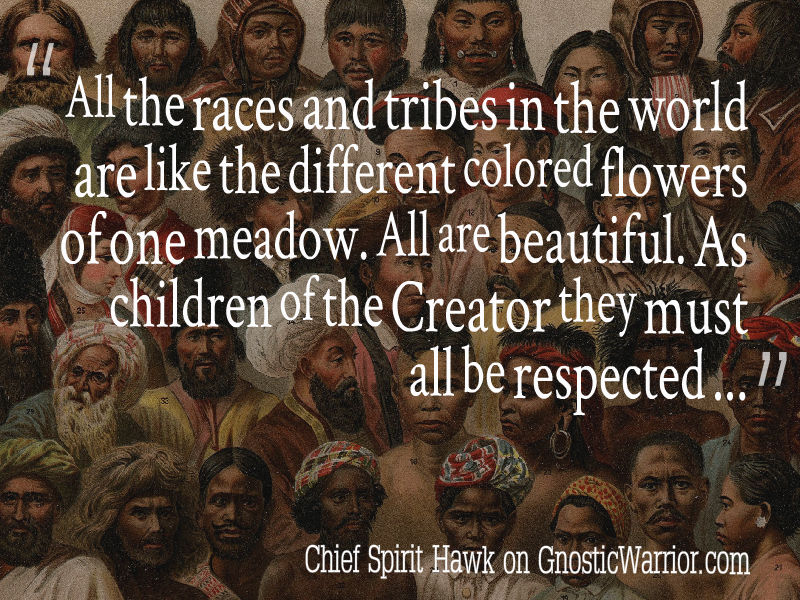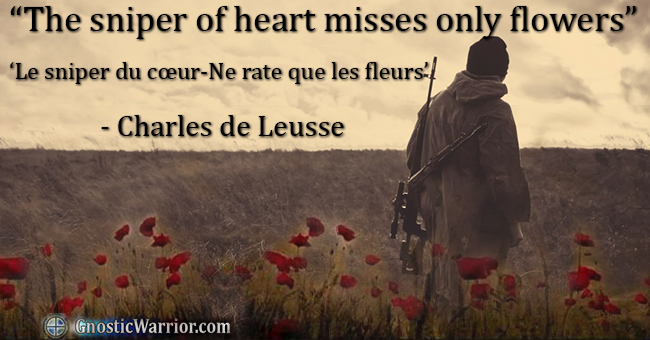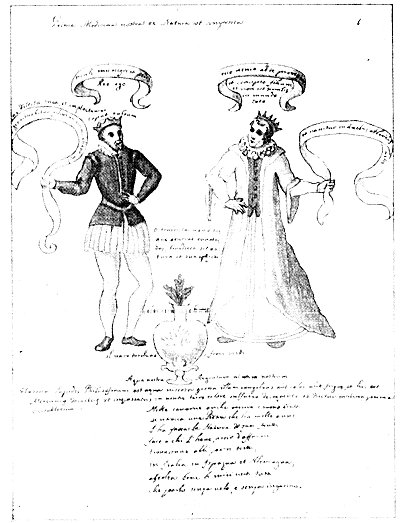During the Middle Ages, mandrake charms brought great prices and an art was evolved by which the resemblance between the mandragora root and the human body was considerably accentuated. Like most superstitions, the belief in the peculiar powers of the mandrake was founded upon an ancient secret doctrine concerning the true nature of the plant. “It is slightly narcotic,” says Eliphas Levi, “and an aphrodisiacal virtue was ascribed to it by the ancients, who represented it as being sought by Thessalian sorcerers for the composition of philtres. Is this root the umbilical vestige of our terrestrial origin, as a certain magical mysticism has suggested? We dare not affirm it seriously, but it is true all the same that man issued from the slime of earth and his first appearance must have been in the form of a rough sketch. The analogies of Nature compel us to admit the notion, at least as a possibility. The first men were, in this case, a family of gigantic, sensitive mandrogores, animated by the sun, who rooted themselves up from the earth.” (See Transcendental Magic.)
The homely onion was revered by the Egyptians as a symbol of the universe because its rings and layers represented the concentric planes into which creation was divided according to the Hermetic Mysteries. It was also regarded as possessing great medicinal virtue. Because of peculiar properties resulting from its pungency, the garlic plant was a powerful agent in transcendental magic. To this day no better medium has been found for the treatment of obsession. Vampirism and certain forms of insanity–especially those resulting from mediumship and the influences of elemental larvæ–respond immediately to the use of garlic. In the Middle Ages, its presence in a house was believed to ward off all evil powers.
Trifoliate plants, such as the shamrock, were employed by many religious cults to represent the principle of the Trinity. St. Patrick is supposed to have used the shamrock to illustrate this doctrine of the triune Divinity. The reason for the additional sanctity conferred by a fourth leaf is that the fourth principle of the Trinity is man, and the presence of this leaf therefore signifies the redemption of humanity.
Wreaths were worn during initiation into the Mysteries and the reading of the sacred books to signify that these processes were consecrated to the deities. On the symbolism of wreaths, Richard Payne Knight writes: “Instead of beads, wreaths of foliage, generally of laurel, olive, myrtle, ivy, or oak, appear upon coins, sometimes encircling the symbolical figures, and sometimes as chaplets upon their heads. All these were sacred to some peculiar personifications of the deity, and significant of some particular attributes, and, in general, all evergreens were Dionysiac planes; that is, symbols of the generative power, signifying perpetuity of youth and vigor, as the circles of beads and diadems signify perpetuity of existence. (See Symbolical Language of Ancient Art and Mythology.)
THE TREE OF ALCHEMY.
From Musæum Hermeticum Reformatum et Amplificatum. The alchemists were went to symbolize their metals by means of a tree, to indicate that all seven were branches dependent upon the single trunk of solar life. As the Seven Spirits depend upon God and are branches of a tree of which He is the root, trunk, and the spiritual earth from which the root derives its nourishment, so the single trunk of divine life and power nourishes all the multitudinous forms of which the universe is composed.
In Gloria Mundi, from which the above illustration is reproduced, there is contained an important thought concerning the plantlike growth of metals: “All trees, herbs, stones, metals, and minerals grow and attain to perfection without being necessarily touched by any human hand: for the seed is raised up from the ground, puts forth flowers, and bears fruit, simply through the agency of natural influences. As it is with plants, so it is with metals. While they lie in the heart of the earth, in their natural ore, they grow and are developed, day by day, through the influence of the four elements: their fire is the splendor of the Sun and Moon; the earth conceives in her womb the splendor of the Sun, and by it the seeds of the metals are well and equally warmed, just like the grain in the fields. * * * For as each tree of the field has its own peculiar shape, appearance, and fruit, so each mountain bears its own particular ore; those stones and that earth being the soil in which the metals grow.” (See Translation of 1893.)

Moe is the founder of GnosticWarrior.com. He is a father, husband, author, martial arts black belt, and an expert in Gnosticism, the occult, and esotericism.




![How the South Saxons received Eadbert and Eolla, and the West Saxons, Daniel and Aldhelm, for their bishops; and of the writings of the same Aldhelm [705 A.D.] | Book 5 | Chapter 17 How the South Saxons received Eadbert and Eolla, and the West Saxons, Daniel and Aldhelm, for their bishops; and of the writings of the same Aldhelm [705 A.D.] | Book 5 | Chapter 17](https://www.gnosticwarrior.com/wp-content/plugins/contextual-related-posts/default.png)
